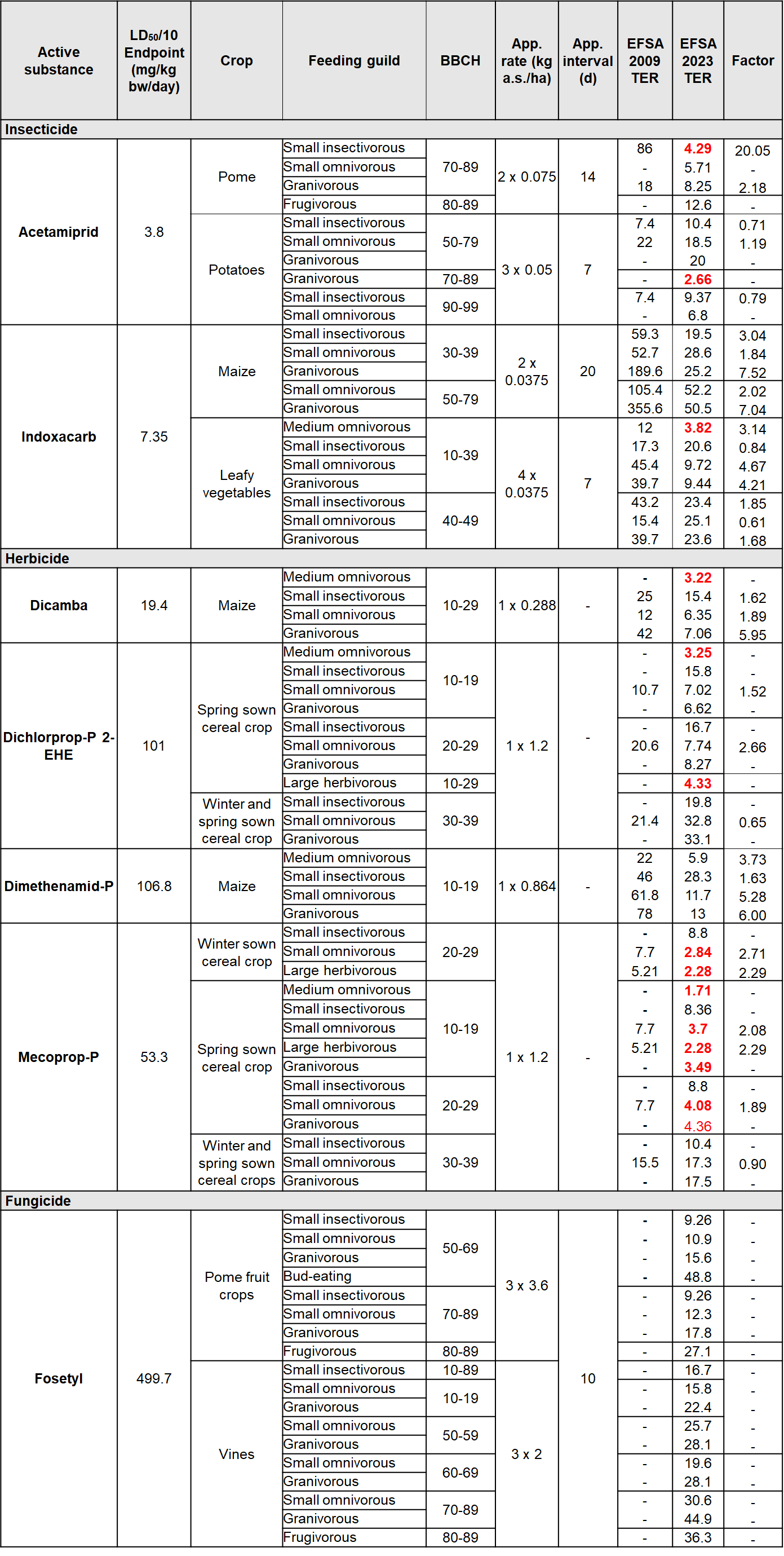EFSA birds and mammals guidance 2023: how to get ahead of new restrictions for avian long-term risk assessment
Forthcoming updated guidance on plant protection product (PPP) risk assessment for birds and mammals poses significant challenges for the sector. New restrictions impacting avian long-term risk assessment are especially problematic. TSG's ecotoxicologists advise PPP companies to be proactive in preparing for the changes.
Updated European Food Safety Authority (EFSA) guidance on risk assessment for birds and mammals was published in February 2023. While the new version is not yet in force, it could be noted any time. EU approval or renewal of authorisation for PPPs will require a tiered ecotoxicological risk assessment based on this guidance, in accordance with Regulation 1107/2009. So, companies that manufacture these pesticides for use in the EU need to take note.
Having evaluated the implications of some of the proposed changes to the guidance, we strongly advise PPP companies to be proactive in their response. Here, we focus on new restrictions surrounding use of the time weighted average factor (fTWA) which adjusts calculated exposure to take account of residue dissipation in the long-term avian risk assessment. We’ve established that the changes could make it much harder for PPPs to pass the Tier 1 assessment, meaning more detailed and specific data would need to be supplied. It’s important to determine whether this might be the case for individual products so steps can be taken to manage commercial risk.
New restrictions to use of time weighted average factor (fTWA)
The fTWA may be applied during the initial screening of PPPs and in the Tier 1 assessment process. Current, but soon to be superseded, EFSA (2009) guidance allows use of a default fTWA of 0.53 to determine toxic effects caused by long-term exposure. This provides a 21-day estimation of the TWA residue exposure assuming a default half-life (the time taken for a certain amount of the PPP to reduce by half as it dissipates in the environment) of ten days.
Under the 2023 guidance, fTWA 0.53 cannot be used in avian long-term risk assessments where the LD50/10 endpoint applies.
Impacts on avian long-term risk assessment
To understand the repercussions of this change, we identified and evaluated ten registered active substances with long-term avian risk assessments that use the LD50/10 endpoint. They included insecticides, herbicides, fungicides and acaricides for use on crops ranging from potatoes, cereals, and leafy vegetables to grapes and citrus. All had passed the Tier 1 risk assessment under the EFSA (2009) guidance.
We performed the long-term avian risk assessment on each of the active substances in accordance with the updated EFSA (2023) guidance. As per the EFSA processes, we first conducted a screening assessment. If the toxicity exposure ratio (TER) fell below the trigger value of 5, we then performed the more detailed Tier 1 assessment. This accounts for the impact on specific feeding guilds (e.g. insectivorous, omnivorous).
Comparing the results based on EFSA (2023) to those using EFSA (2009) reveals a significant shift in the level of conservatism. Almost 60 percent of the registered uses would fail the Tier 1 assessment under the new guidance. The table below summarises our findings. Excluding the use of fTWA when the LD50/10 endpoint is used in avian long-term risk assessment results in an extremely conservative approach.

TER values highlighted in bold fall below the relevant trigger.
TER values highlighted in red fail the EFSA (2023) risk assessment where the assessment was acceptable according to EFSA (2009).
How should PPP companies respond?
Our evaluation indicates how PPPs containing ten widely used active substances would fare under EFSA’s updated guidance. At present, the timeline for the introduction of the new guidance is unknown, and lack of harmony between EU Member States makes it difficult to determine the precise implications of the changes. There is also uncertainty surrounding the UK and whether it will adopt similar guidance. What we do know is that there is a global trend towards more conservative attitudes and approaches to the use of chemicals in the environment, especially in a plant protection context.
We advise establishing which products might fail the Tier 1 avian long-term risk assessment under the new guidance at the earliest opportunity. This proactive stance facilitates a strategic and timely approach to the preparation of any additional data required for higher tiers of assessment. While higher assessment tiers are less conservative, they progressively become more representative of real environments. This introduces greater complexity, meaning more effort is required to produce relevant scientific information. What’s more, if field tests are needed, seasonal variations could impact when studies can be performed, potentially delaying the process.
Companies that review plant protection products before EFSA’s updated risk assessment for birds and mammals is noted have an opportunity to get ahead. TSG’s dedicated Ecotoxicology team can help with the initial evaluation and devising of strategies, including the potential for data generation. Find out more about our services here.